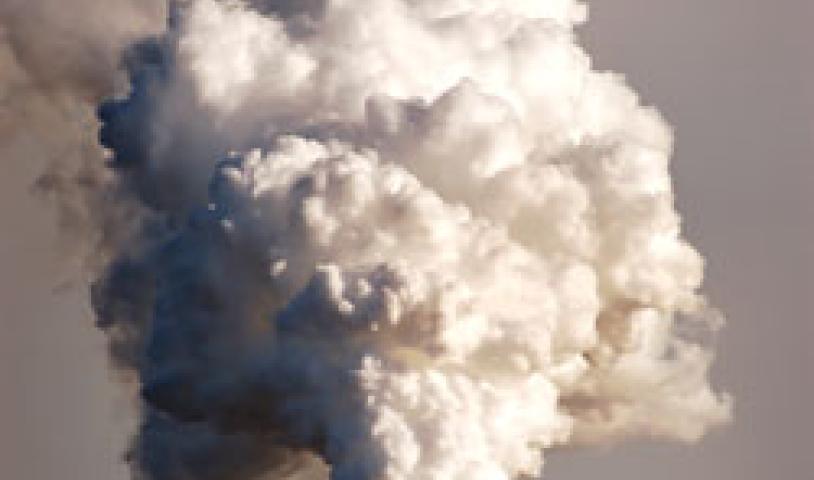Environmentalists Urge Minister Penner to Reject Incineration Due to Toxic Ash in Burns Bog Landfill
Tuesday, August 17, 2010
Metro Vancouver staff has suggested that if the current waste management plan goes forward as proposed that all of the toxic ash from incinerating garbage in the Metro Vancouver region would be dumped at the Burns Bog landfill site.
Burns Bog is often referred to as "the lungs of the lower mainland" because of the vitally important ecological services it provides, such as air filtration and capturing and storing greenhouse gases.
"They shouldn't be creating this highly toxic ash in the first place, but if they decide to create more of it they definitely shouldn't even consider mixing it with with municipal solid waste and burying it in the Burns Bog area," said Ben West Healthy Communities Campaigner with the Wilderness Committee. The proposed waste management plan has been forwarded for consideration to Barry Penner, Minister of the Environment. If the plan goes ahead in its current form, approximately 150,000 tonnes of toxic ash would be taken to the Burns Bog Landfill each year for disposal.
Currently, fly ash from the scrubbers in the Burnaby Incinerator is taken to the Cache Creek area, where is treated with the patented "West Phix" system. The West Phix process involves mixing the ash with sulphuric acid and lyme, which is supposed to keep the ash neutralized. This process doesn't appear to be working as well as Metro Vancouver staff claim. The 2009 annual report from Wastech , the company that manages the Cache Creek landfill, shows that there is reason to be concerned about heavy metals and potentially other toxins being released from treated incinerator ash. Wastech performed their own independent study on incinerator ash and decided that the best approach to dealing with this toxic material was to give it a dedicated cell in the landfill and strive to keep it as dry as possible to minimize leaching. Cache Creek is a drier climate than the Burns Bog area, and the Burns Bog landfill does not use a modern double liner system.
"We need Minister Penner to take a closer look at what is planned before letting these toxins get anywhere close to the Bog" said Eliza Olson, president of the Burns Bog Conservation Society. "Burns Bog is far too important to put at risk. The Bog is provides such important ecosystem services, and is home for rare wildlife like Sandhill cranes and the Southern Red-backed vole . The Minister needs to look at the cumulative impacts on the Bog from proposed highway development, ongoing landfilling and now this new threat of toxins from incinerator fly ash," said Olson .
If the waste management plan goes forward as planned it would mean that service contracts with Cache Creek would not be signed by Metro Vancouver. The Vancouver landfill will be the only landfill left in the region and would be the only facility currently in place to deal with this pile of toxic ash, which would grow annually.
"I just don't get Louis Jackson's logic," said West. "She is the Mayor of Delta and the Chair of the Metro Vancouver Regional District board, yet she seems to be victimizing her own community by allowing this plan to go forward in its current form. She raises concerns about what she calls the mountain of garbage in Delta, but this plan is inviting something far worse," said West.
Bottom ash from the incinerator in Burnaby is currently taken to the Burns Bog landfill and is used in road construction and landfill cover. New reports show that there may be reasons for significant concern about the bottom ash as well, along with well known concerns about the scrubber fly ash.
"It's clear that our garbage is toxic. It becomes worse when the garbage is burned, as even more harmful toxins are created in the process. Those toxins shouldn't be going into the lungs of the lower mainland, either literally by releasing emissions into the air or metaphorically by putting this toxic ash into the Burns Bog area . This incineration plan does both," said West. "We need a plan that works towards closing our landfills through expanded composting, recycling and mandated manufacturer take back programs. Incineration doesn't close landfills. It just converts landfills to toxic waste storage facilities."
For more information please contact:
Ben West, Wilderness Committee, Healthy Communities Campaigner, 604-710-5340
Eliza Olson, Burns Bog Conservation, Society President, 604-418-2314
See the Wastech 2009 Annual Report (see section 7 for information about incinerator ash at Cache Creek landfill)
General Information about Incinerator Ash: WildernessCommittee.org/Ash
